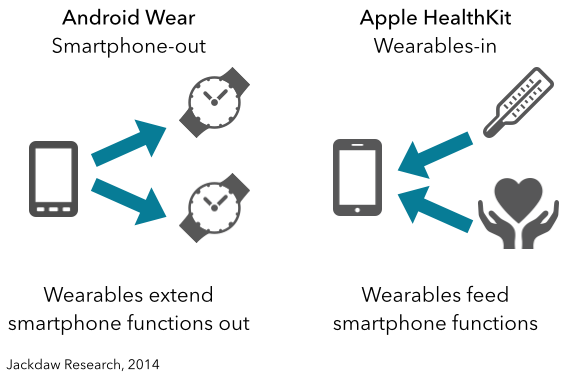Back in January, I did a post titled “Why Apple may not launch an iWatch anytime soon.” The gist of the piece was this: that Apple doesn’t enter markets particularly early, but rather enters at the point where the technology is ready for it to provide the kind of transformative product it’s used to disrupt the music player, smartphone and tablet markets in the past. At the time, my conclusion was that Apple would likely stay out of the wearables business entirely, until such time as the underlying technology was ready. However, given the other things we’ve seen from Apple in the last few months, I now believe it’s very likely we’ll see something in this category from Apple in the near future, but it won’t be a watch, and it’s likely that it will actually be several products rather than just one.
Smartwatches aren’t delivering on the promise, but the promise is flawed too
There are two big problems with the smartwatch market as it stands: firstly, the underlying technology doesn’t seem to be ready, which means it doesn’t deliver on the promise of the category. But secondly, the promise itself simply isn’t all that compelling for the vast majority of the general population. There’s a sense that if someone can just crack the smartwatch category it’ll suddenly explode, but I’m just not sure I agree with that. It still fundamentally seems like a solution in search of a problem at this point. But the coverage – as is so often the case – is driven by a very small number of people who likely are in the target segment and therefore talk up both the promise and the reality well beyond what’s justified.
A different approach solves some fundamental problems
For all these reasons, I’m still skeptical that Apple will release a product that’s identifiable as a watch. If I think about the thorniest technological challenge with smartwatches, it’s the fact that you’re having to squeeze both a fairly smart CPU and a decent display, and the battery to power them, into what has to be a very small form factor. That problem essentially goes away if you see wearables less as notification screens and more as off-device sensors, as Apple seems to, in contrast to Google:
If wearables are merely providing sensor extensions to the smartphone rather than trying to replicate smartphone functions, you can do away with the bright, big screen and the powerful CPU, and strip both down significantly. On some wearables, you might retain a small display, but it’s entirely possible that others would do away with it entirely. Put in the relevant sensors, a Bluetooth LE radio and a small CPU, and you’d be done. This would allow you to make the device significantly smaller and sleeker, make the battery last much longer, and also allow for many other form factors that could be worn in different places around the body. Continue reading

